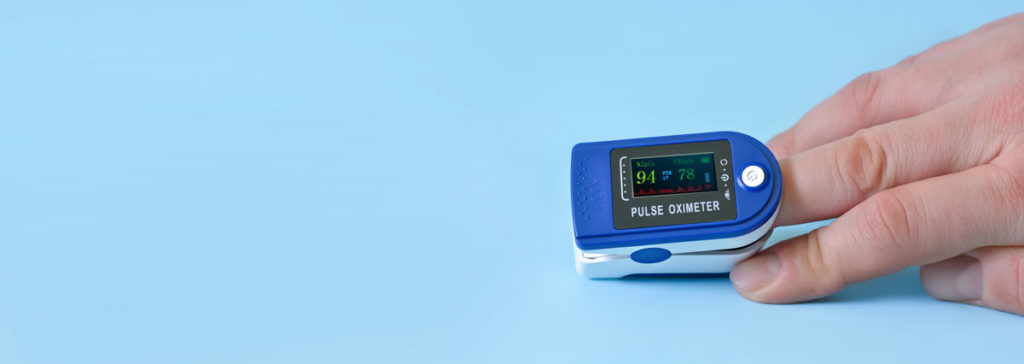A Pulse Oximeter is an oxygen saturation monitoring device widely used in medical practices for measuring and analyzing blood oxygen saturation levels during the administration of intravenous anesthesia in a non-invasive way! At Implants Pro Center – San Francisco, all our surgeries are monitored by professional doctors. We make sure we take complete care of our patients before, during, and after their treatment! We utilize pulse oximeters to detect vascular integrity in your teeth. The pulse oximeter is placed on a dental patient’s fingertip to read the oxygen saturation of their blood to ensure enough oxygen is getting to the brain. The smooth and straightforward application of the device and its capability to provide vital information about the patient’s status made its full acceptance in the medical field.
Our San Francisco doctors use advanced technology to monitor a patient’s blood pressure, pulse rate, and blood dissolved oxygen content during their treatment. Used by patients who receive sedation dentistry, this technology monitors their vital signs and ensures their safety during the sedation procedure. Our dentist and team are entirely dedicated and fully committed to offering you with best possible treatment that is pain-free and effective. By monitoring your blood pressure, pulse, and oxygen levels, we can ensure that your safety is not at stake. And in doing so, it helps prevent and detect other possible complications. There are two significant monitoring purposes; controlling the depth and response to the sedation given, i.e., the degree of physiological trespass, and preventing threatening disasters, most of which occur infrequently and unexpectedly.
How Do Pulse Oximeters Function?
Pulse Oximeters are non-invasive, by putting a pulsating vascular bed (such as a finger) between a two-wavelength light source and a detector. It measures your vascular system through light absorption, allowing examination without an invasive procedure. A pulse oximeter can be applied to a finger or toe in one of two ways: One way is utilizing a band-aid-like adhesive strip holding the light source and the detector. A second way is through a two-tonged plastic tool that wraps around your finger with either a screen to read out on or a cable to plug into a computer. The light sensor can count a patient’s heart rate, the amount of oxygen in the blood, and discover normal, elevated, or high blood pressure with up to 95% of accuracy. A thorough, beat-to-beat, percentage of oxygen saturation and current heart rate flashes as a digital readout. This instrument is a brilliant tool to determinate arterial blood oxygen levels in all dental patients, young to old.

What Are The Alternatives?
Another technique for achieving the same information is known as intra-arterial blood pressure measurement, which is undoubtedly accurate but invasive. Intra-arterial blood pressure measurement requires a doctor to insert a needle into a patient’s artery. Pulse Oximeters are almost as accurate as this procedure, while not needing to enter a dental patient’s body.
Need And Applications Of A Pulse Oximeter
High blood pressure or Hypertension causes up to 1,100 deaths each day in the USA alone. Hence, we feel it is very crucial to monitor all people at risk frequently. Such conditions can easily result in reduced blood flow, heart disease, and even strokes.
Hypoxia – the lack of availability of oxygen to the tissues – is a giant danger to patients as well. Tissue hypoxia is a significant reason for morbidity and, ultimately, a large cause of death for humans. Pulse oximeters usually help provide accurate data within a 2% error range, aiming for a 70% to 100% hemoglobin saturation when the sensors receive a satisfactory signal.
Many Criteria Must Be Satisfied For The Excellent And Sufficient Availability Of Oxygen To Tissues:
- Inhalation of sufficient oxygen.
- Careful control of oxygen entering the lungs.
- Ample pulmonary gas exchange.
- Enough blood flow to the tissues.
- Sufficient capacity carries oxygen by the patient.
With local anesthetics and extensive dental procedures, patients usually experience stress and other systemic disturbances, which can prevent a patient from inhaling enough oxygen.
To Avoid Many Hazardous Reactions, Dentists Need To Monitor Medically Challenged Patients Persistently, Which Helps In Different Ways:
- It helps the dentist to learn about serious medical emergencies that may require immediate action.
- Monitoring may show gradual adverse health conditions that a doctor can quickly reverse before an actual emergency arises.
- Monitoring helps the dentist in evaluating the efficacy of any administered treatments or preventive measures.
The most frequent periods of oxygen desaturation occur during sedation procedures on pediatric patients (children). In almost all cases of oxygen desaturation below 95%, changing the head’s position opens a patient’s airway, resulting in an immediate return to normal saturation levels. Pulse Oximeters assist with performing on pediatric patients and older patients, especially to fight potential oxygen loss. Development in science and technology has a significant impact on medicine, which has increasingly amplified the survival of patients with severe health issues. It also significantly prolongs life with older adults with systemic disorders. Advanced technology such as blood pressure monitors and pulse oximeters has helped keep up with the increasing societal expectations regarding dental health and function, ensuring that patients can retain or easily replace their teeth!
So, in a nutshell, Pulse Oximeters are a new invention that helps succinctly detect hypoxia. Most often used with sedated patients, Pulse Oximeters allow us to monitor their oxygen status accurately, continuously, and non-invasively. Fear and anxiety are natural reasons why patients fail to seek dental care, as pain is anxiety-inducing and stressful. The control of pain and stress is, therefore, an essential part of dental practice. Pulse Oximetry provides a higher safety margin for patients receiving respiratory depressant drugs than traditional monitoring techniques. Even among the healthiest dental patients, there is a tiny margin of danger with sedation, which gives little time for remedial measures before irreparable damage arises. Pulse Oximeters provide a beat-to-beat analysis of heart rate, pulse rhythm, volume, and hemoglobin saturation in arterial blood to give forewarning on any potential problems before it’s too late. Pulse oximeters represent the most significant advancement in patient monitoring, which non-invasively and safely continuously indicate adequate circulatory and respiratory function.
Looking For A Dental Procedure?
Implants Pro Center©, San Francisco, offers a complimentary consultation based on your convenience. You can easily learn more about our dental implant options and treatment approaches/methodologies on our website. Find out today how dental implants can change your life! At Implants Pro Center©, our office in San Francisco, CA takes all main dental and medical PPO insurances, along with Medicare, thereby decreasing your anxiety about the expense of dental implant treatment or any oral surgeries. A tremendously experienced and caring team will give life-long care, maintenance, and assistance. Implants Pro Center© is stocked with modern technologies like CT-Scanner, Intravenous Sedation, Platelet Rich Fibrin, and others to present nothing less than the best of services. You will be entirely at ease for any of your surgeries. Schedule your complimentary consultation today!

